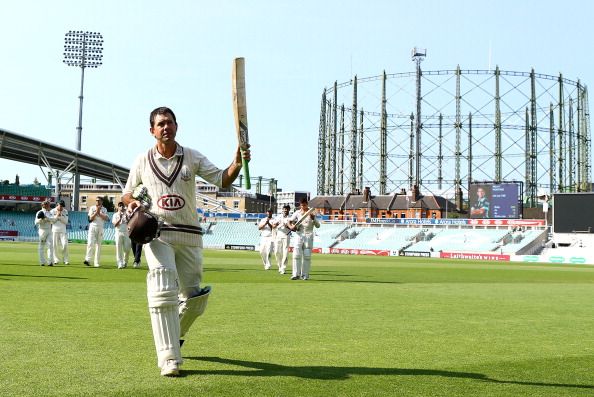
Once stable, now a liability – the story of Australia’s reeling number three batsman

Ponting’s void has been difficult to fill
It wasn’t long ago that Australia’s number 3 batsman was the best in the business. Hundreds were abundant at this position, and never was it a rarity for a dozen years. It was such a sinew in the team that selectors never panicked to find a replacement. Perpetually and unanimously, it belonged to one man.
In fact, he batted at number 3 for so long a time that West Indies cricket saw more than a dozen captains operate; Chelsea Football Club saw the tenures of six managers and Roger Federer won 17 Grand Slams. While my attempts to be humorous can often fail, Ricky Ponting remarkably almost never did when he batted at number 3 for Australia.
This Ashes series evinced what has been the case for a year now: that Australia has struggled as a batting side. While many believed the retirement of Ponting seven months ago would leave voids wide open to be filled by thriving young men, Australian cricket has undoubtedly failed to find a substitute in as much time.
Prior to the start of the second Ashes Test, Ed Cowan was the alternative. Like many of his predecessors since Ponting’s departure from the line-up, he failed to show any sort of credibility. A lot of critics argued if the left-hander was even the right option, but Michael Clarke, Australia’s Test captain, came out in vehement support of Cowan’s selection in the first Test team.
Clarke’s support proved futile as England‘s acclaimed bowling attack ran rout of not only Cowan but the entire Aussie top order. What was once to be a prominent batting position, ironically, turned out to be the team’s biggest decrepitude.
In came Khawaja for the second Test. Although he has showed off a little of his graceful footwork, the Australians still haven’t assured themselves of a band-aid for the faltering number 3 position. And they better come up something more solid if they hope to lodge any sort of comeback in this Ashes series.
A bit of research also reveals a declining trend in Australian domestic cricket. In 2000, the year that saw the rejuvenated ascent of Ricky Ponting to his mantle at number three, nearly every other batsman in the pecking order averaged over 40 in first class cricket. Michael Hussey, then an unheralded talent, averaged as much as 52 while Michael Bevan, Simon Katich and Brad Hodge scored over 54 runs per inning in first class cricket. In addition, there were a host of others with their average in the high 40s, just waiting for one chance.
Today, Australian cricket tells an entirely different story. The average age equates to nearly the same as in 2000 but that isn’t the case with batting averages. What adds fuel to the fire is the deprecating stat that not a single of their recognised batsmen is scoring at 50 runs per innings.
The lack of quality top order batsmen is just one side of the quandary. Another reason that could be levelled for Australia’s declining fortunes is their failure to field young talent during its stretch of invincibility in the 2000s.
In an era that saw the team certify its undisputed tag by capturing two World Cups without a single defeat and three Ashes series, the Australian side barely handed out caps to youngsters. To be fair, the selectors didn’t see the need to, but in the long run it has come back to bite them. It was also a commonality back then that cricketing opponents of Australia keenly waited for the team’s core to progressively retire.